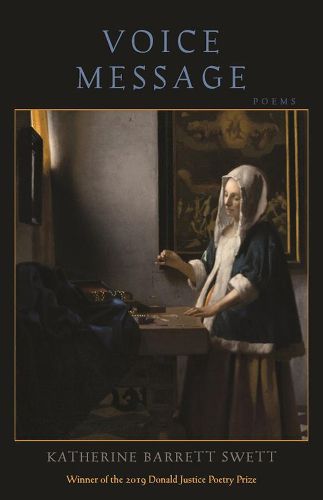Readings Newsletter
Become a Readings Member to make your shopping experience even easier.
Sign in or sign up for free!
You’re not far away from qualifying for FREE standard shipping within Australia
You’ve qualified for FREE standard shipping within Australia
The cart is loading…






Through the poems of Voice Message, Katherine Barrett Swett reflects on her personal tragedy and the fragility of human lives and bodies with a tender care. Her debut collection explores the powers of art and poetry to participate in the processing of catastrophic grief, speaking through both the consolation and devastation these creative works can offer. Swett’s formal verse provides a lens through which sadness, destruction, and loss appear as aberrant and inevitable. In tragic lyric, the poet searches poetry, art, mythology, and her own memory for the fleeting image of her lost daughter in music, painting, or a carved stone name. Frequently looking to visual arts for inspiration, she finds that Vermeer’s paintings of distant rooms guide and contextualize pain, offering motivation, comfort, and release. Through villanelles, sonnets, quatrains, and free verse, Swett invokes the voices, narratives, and images, both personal and cultural, that haunt her speakers. Suspended in the aftermath of the unexpected and unspeakable death of her college-age daughter, the poet’s language is held together in a somber and necessary restraint. But this restraint does not signal the peace of closure. Rather, these poems quietly and steadily remind readers it is still the open wound / not the scar, that all we have are words and flesh, and that we are forever vulnerable. The rhythm of and echoes of sonnets and songs lead us to the sticky intersections of tragedy, recovery, and strange forms of beauty.
$9.00 standard shipping within Australia
FREE standard shipping within Australia for orders over $100.00
Express & International shipping calculated at checkout
Through the poems of Voice Message, Katherine Barrett Swett reflects on her personal tragedy and the fragility of human lives and bodies with a tender care. Her debut collection explores the powers of art and poetry to participate in the processing of catastrophic grief, speaking through both the consolation and devastation these creative works can offer. Swett’s formal verse provides a lens through which sadness, destruction, and loss appear as aberrant and inevitable. In tragic lyric, the poet searches poetry, art, mythology, and her own memory for the fleeting image of her lost daughter in music, painting, or a carved stone name. Frequently looking to visual arts for inspiration, she finds that Vermeer’s paintings of distant rooms guide and contextualize pain, offering motivation, comfort, and release. Through villanelles, sonnets, quatrains, and free verse, Swett invokes the voices, narratives, and images, both personal and cultural, that haunt her speakers. Suspended in the aftermath of the unexpected and unspeakable death of her college-age daughter, the poet’s language is held together in a somber and necessary restraint. But this restraint does not signal the peace of closure. Rather, these poems quietly and steadily remind readers it is still the open wound / not the scar, that all we have are words and flesh, and that we are forever vulnerable. The rhythm of and echoes of sonnets and songs lead us to the sticky intersections of tragedy, recovery, and strange forms of beauty.